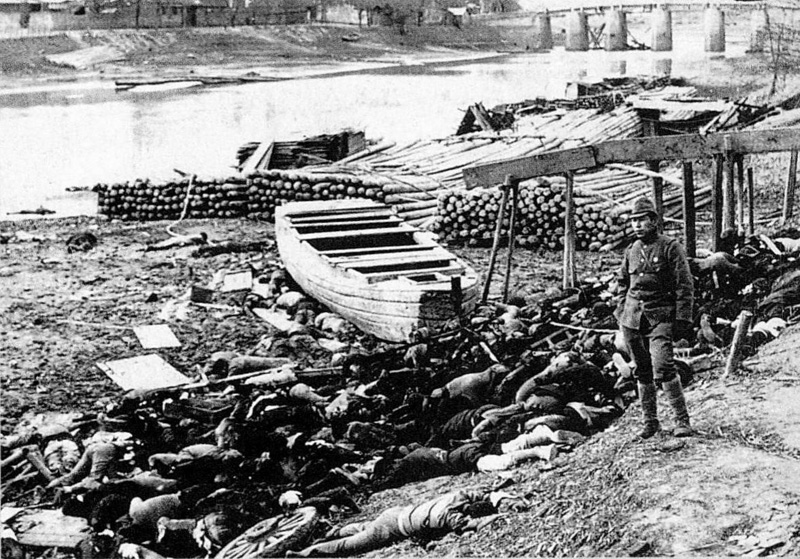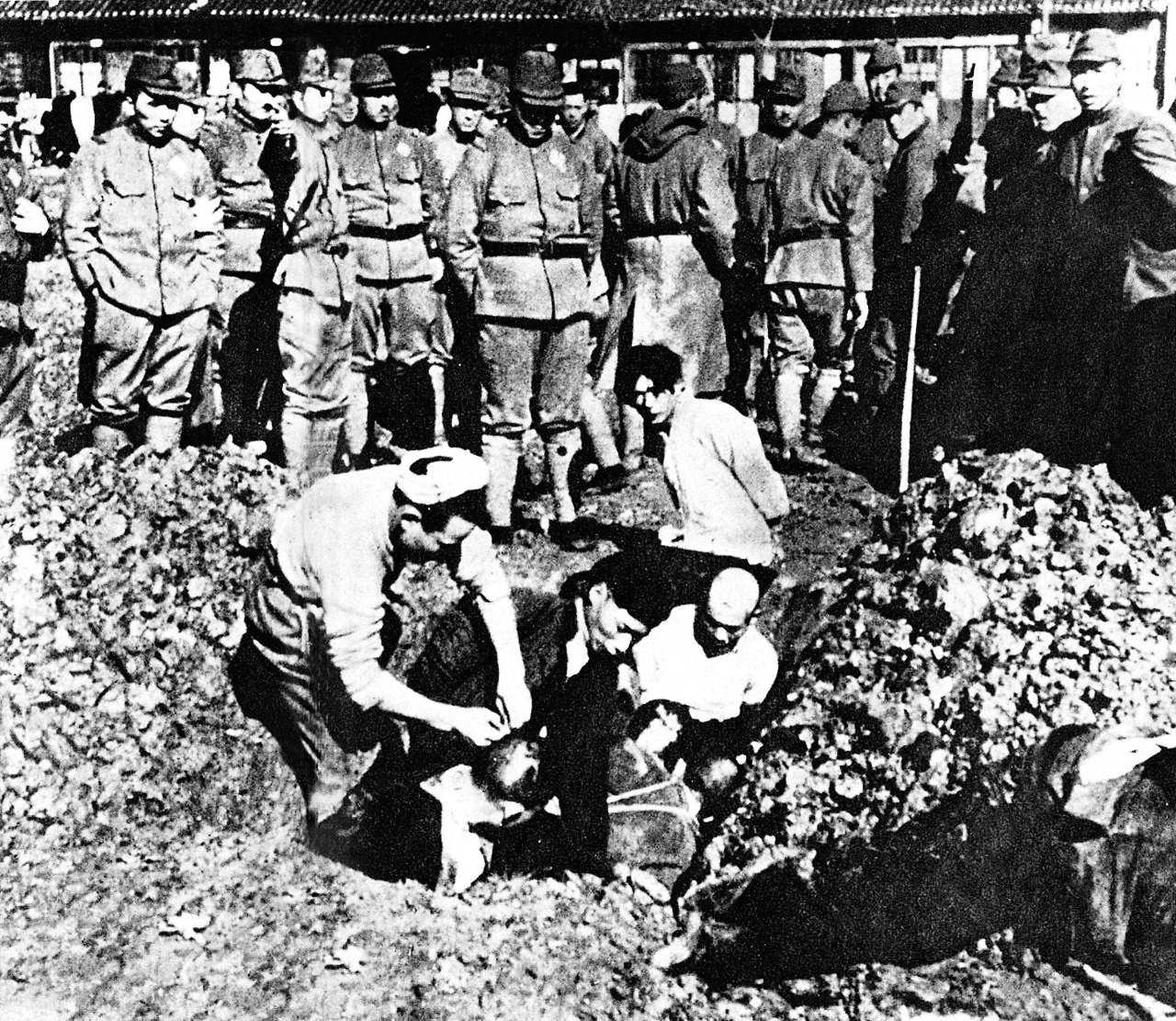|
Torn Memories Of Nanjing
is a 2009 Japanese documentary film by Japanese activist Tamaki Matsuoka about the Nanjing Massacre. On March 28, 2010 it was shown at the Hong Kong International Film Festival. It includes interviews with Japanese veterans who admit to raping and killing Chinese civilians, and accounts by Chinese survivors. See also *Nanking massacre * Japanese war crimes *Japanese Devils ''Japanese Devils'' (or ''Riben Guizi'' ) is a Japanese documentary about the war crimes committed by the Imperial Japanese Army between 1931 and 1945. The documentary is a series of interviews with 14 Japanese veterans of the Second Sino-Japan ... References 2009 films 2000s Japanese-language films 2009 documentary films Documentary films about Japanese war crimes Nanjing Massacre films Japanese documentary films 2000s Japanese films {{WWII-documentary-film-stub ... [...More Info...] [...Related Items...] OR: [Wikipedia] [Google] [Baidu] |
Tamaki Matsuoka
is a Japanese activist who challenges Japanese perceptions of the country's war crimes in the Rape of Nanking during Second Sino-Japanese War. Being a primary school teacher in Matsubara, Osaka teaching history subject, Matsuoka felt she needed to tell the truth about Japanese war crimes to her students. She visited Nanjing, China several times to interview hundreds of Japanese veterans and Chinese survivors, and published books and films showing their memories after Japan captured Nanking. Her works include the 2009 documentary '' Torn Memories of Nanjing''. Matsuoka is a member of the Japan-China Peace Research Organization which attends the memorial ceremony at the Nanjing Massacre Memorial Hall in Nanjing on August 15 Events Pre-1600 * 636 – Arab–Byzantine wars: The Battle of Yarmouk between the Byzantine Empire and the Rashidun Caliphate begins. * 717 – Arab–Byzantine wars: Maslama ibn Abd al-Malik begins the Second Arab Siege of Constant ... every ... [...More Info...] [...Related Items...] OR: [Wikipedia] [Google] [Baidu] |
Nanjing Massacre
The Nanjing Massacre (, ja, 南京大虐殺, Nankin Daigyakusatsu) or the Rape of Nanjing (formerly romanized as ''Nanking'') was the mass murder of Chinese civilians in Nanjing, the capital of the Republic of China, immediately after the Battle of Nanking in the Second Sino-Japanese War, by the Imperial Japanese Army. Beginning on December 13, 1937, the massacre lasted six weeks. The perpetrators also committed other war crimes such as mass rape, looting, and arson. The massacre was one of the worst atrocities committed during World War II. The Japanese Army had pushed quickly through China after capturing Shanghai in November 1937. By early December, it was on the outskirts of Nanjing. The speed of the army's advance was likely due to commanders allowing looting and rape along the way. As the Japanese approached, the Chinese army withdrew the bulk of its forces since Nanjing was not a defensible position. The civilian government of Nanjing fled, leaving the city under the ... [...More Info...] [...Related Items...] OR: [Wikipedia] [Google] [Baidu] |
Nanking Massacre
The Nanjing Massacre (, ja, 南京大虐殺, Nankin Daigyakusatsu) or the Rape of Nanjing (formerly romanized as ''Nanking'') was the mass murder of Chinese civilians in Nanjing, the capital of the Republic of China, immediately after the Battle of Nanking in the Second Sino-Japanese War, by the Imperial Japanese Army. Beginning on December 13, 1937, the massacre lasted six weeks. The perpetrators also committed other war crimes such as mass rape, looting, and arson. The massacre was one of the worst atrocities committed during World War II. The Japanese Army had pushed quickly through China after capturing Shanghai in November 1937. By early December, it was on the outskirts of Nanjing. The speed of the army's advance was likely due to commanders allowing looting and rape along the way. As the Japanese approached, the Chinese army withdrew the bulk of its forces since Nanjing was not a defensible position. The civilian government of Nanjing fled, leaving the city under the ... [...More Info...] [...Related Items...] OR: [Wikipedia] [Google] [Baidu] |
Japanese War Crimes
The Empire of Japan committed war crimes in many Asian-Pacific countries during the period of Japanese militarism, Japanese imperialism, primarily during the Second Sino-Japanese War, Second Sino-Japanese and Pacific Wars. These incidents have been described as an "Asian Holocaust". Some war crimes were committed by Japanese military personnel during the late 19th century, but most were committed during the first part of the Shōwa (1926–1989), Shōwa era, the name given to the reign of Emperor of Japan, Emperor Hirohito. Under Emperor Hirohito, the Imperial Japanese Army (IJA) and the Imperial Japanese Navy (IJN) perpetrated numerous war crimes which resulted in the deaths of millions of people. Estimates of the number of deaths range from three to 30 million through Nanjing Massacre, massacres, Unit 731, human experimentation, Vietnamese famine of 1945, starvation, and Slavery in Japan#World War II, forced labor directly perpetrated or condoned by the Japanese military and go ... [...More Info...] [...Related Items...] OR: [Wikipedia] [Google] [Baidu] |
Japanese Devils
''Japanese Devils'' (or ''Riben Guizi'' ) is a Japanese documentary about the war crimes committed by the Imperial Japanese Army between 1931 and 1945. The documentary is a series of interviews with 14 Japanese veterans of the Second Sino-Japanese War who recount rape, massacres, bio-experiments, and cannibalism. The accuracy of these interviews is contested by Japanese nationalist critics. Minoru Matsui's inspiration for the film came after one of his original interviewees died. Feeling that it was his last chance to document the stories, he began the process of creating the documentary. Initial support was minimal, with all production companies showing no interest. The film did not gain any traction until it was entered into the Berlin Film Festival. The original title, Riben Guizi ''Guizi'' () is a pejorative Chinese slang term for foreigners. It has had a history of containing xenophobic connotations. History Starting with the arrival of European sailors in the six ... [...More Info...] [...Related Items...] OR: [Wikipedia] [Google] [Baidu] |
2009 Films
The year 2009 saw the release of many films. Seven made the top 50 list of highest-grossing films. Also in 2009, the Academy of Motion Picture Arts and Sciences announced that as of that year, their Best Picture category would consist of ten nominees, rather than five (the first time since the 1943 awards). Evaluation of the year Film critic Philip French of ''The Guardian'' said that 2009 "began with the usual flurry of serious major movies given late December screenings in Los Angeles to qualify for the Oscars. They're now forgotten or vaguely regarded as semi-classics: ''The Reader'', '' Che'', ''Slumdog Millionaire'', '' Frost/Nixon'', '' Revolutionary Road'', ''The Wrestler'', ''Gran Torino'', '' The Curious Case of Benjamin Button''. It soon became apparent that horror movies would be the dominant genre once again, with vampires the pre-eminent sub-species, the most profitable inevitably being '' New Moon'', the latest in Stephenie Meyer's ''Twilight'' saga, the best the ... [...More Info...] [...Related Items...] OR: [Wikipedia] [Google] [Baidu] |
2000s Japanese-language Films
S, or s, is the nineteenth letter in the Latin alphabet, used in the modern English alphabet, the alphabets of other western European languages and others worldwide. Its name in English is ''ess'' (pronounced ), plural ''esses''. History Origin Northwest Semitic šîn represented a voiceless postalveolar fricative (as in 'ip'). It originated most likely as a pictogram of a tooth () and represented the phoneme via the acrophonic principle. Ancient Greek did not have a phoneme, so the derived Greek letter sigma () came to represent the voiceless alveolar sibilant . While the letter shape Σ continues Phoenician ''šîn'', its name ''sigma'' is taken from the letter '' samekh'', while the shape and position of ''samekh'' but name of ''šîn'' is continued in the '' xi''. Within Greek, the name of ''sigma'' was influenced by its association with the Greek word (earlier ) "to hiss". The original name of the letter "sigma" may have been ''san'', but due to the compli ... [...More Info...] [...Related Items...] OR: [Wikipedia] [Google] [Baidu] |
2009 Documentary Films
9 (nine) is the natural number following and preceding . Evolution of the Arabic digit In the beginning, various Indians wrote a digit 9 similar in shape to the modern closing question mark without the bottom dot. The Kshatrapa, Andhra and Gupta started curving the bottom vertical line coming up with a -look-alike. The Nagari continued the bottom stroke to make a circle and enclose the 3-look-alike, in much the same way that the sign @ encircles a lowercase ''a''. As time went on, the enclosing circle became bigger and its line continued beyond the circle downwards, as the 3-look-alike became smaller. Soon, all that was left of the 3-look-alike was a squiggle. The Arabs simply connected that squiggle to the downward stroke at the middle and subsequent European change was purely cosmetic. While the shape of the glyph for the digit 9 has an ascender in most modern typefaces, in typefaces with text figures the character usually has a descender, as, for example, in . The mod ... [...More Info...] [...Related Items...] OR: [Wikipedia] [Google] [Baidu] |
Nanjing Massacre Films
Nanjing (; , Mandarin pronunciation: ), alternately romanized as Nanking, is the capital of Jiangsu province of the People's Republic of China. It is a sub-provincial city, a megacity, and the second largest city in the East China region. The city has 11 districts, an administrative area of , and a total recorded population of 9,314,685 . Situated in the Yangtze River Delta region, Nanjing has a prominent place in Chinese history and culture, having served as the capital of various Chinese dynasties, kingdoms and republican governments dating from the 3rd century to 1949, and has thus long been a major center of culture, education, research, politics, economy, transport networks and tourism, being the home to one of the world's largest inland ports. The city is also one of the fifteen sub-provincial cities in the People's Republic of China's administrative structure, enjoying jurisdictional and economic autonomy only slightly less than that of a province. Nanjing ... [...More Info...] [...Related Items...] OR: [Wikipedia] [Google] [Baidu] |
Japanese Documentary Films
Japanese may refer to: * Something from or related to Japan, an island country in East Asia * Japanese language, spoken mainly in Japan * Japanese people, the ethnic group that identifies with Japan through ancestry or culture ** Japanese diaspora, Japanese emigrants and their descendants around the world * Japanese citizens, nationals of Japan under Japanese nationality law ** Foreign-born Japanese, naturalized citizens of Japan * Japanese writing system, consisting of kanji and kana * Japanese cuisine, the food and food culture of Japan See also * List of Japanese people * * Japonica (other) * Japonicum * Japonicus This list of Latin and Greek words commonly used in systematic names is intended to help those unfamiliar with classical languages to understand and remember the scientific names of organisms. The binomial nomenclature used for animals and plants i ... * Japanese studies {{disambiguation Language and nationality disambiguation pages ... [...More Info...] [...Related Items...] OR: [Wikipedia] [Google] [Baidu] |


